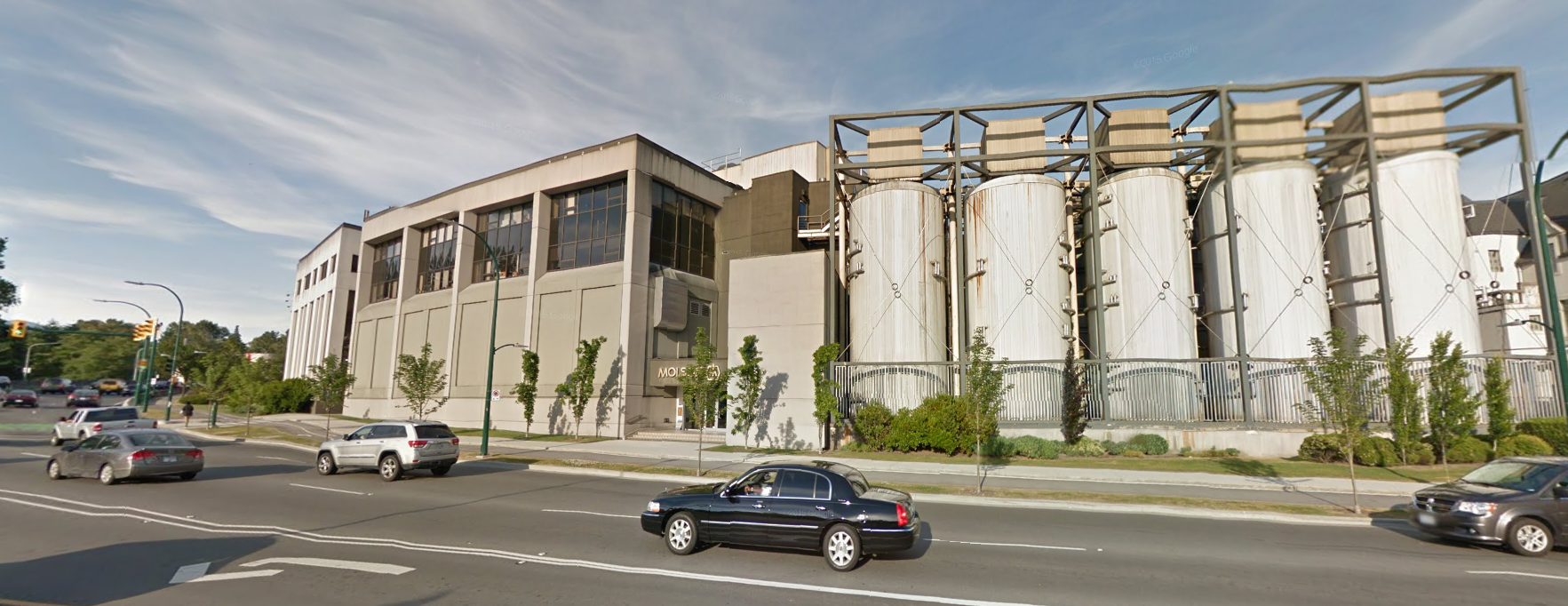Love ‘em or hate ‘em, Concord Pacific has had a pretty profound impact on our city. In just thirty years, the Li-Ka Shing founded company has gone on to develop large scale master planned communities across the country, but their (ongoing) development of the old Expo 86 site on north False Creek has been nothing short of transformative for our city and region.
That’s why the incredulity that greeted last week’s announcement that residential-build-focused Concord paid over three times the assessed value for the protected industrially-zoned Molson Brewery site at the southeast end of the Burrard Bridge needs a bit of circumspection. You don’t get to be one of BC’s largest new home developers by making cavalier and reckless business moves, so at the request of Vancouver Green councillor Adriane Carr, I looked a little deeper.
First, let’s get the idea of influence-for-donations out of the way. Yes, as Alan Garr reports Concord have donated a lot to the ruling Vision Vancouver council over successive elections (over $100,000 if you consider the donations of Concord Pacific and subsidiaries over the last two campaign periods). But Concord’s purchase is not predicated by some notion of nefarious influence peddling that will guarantee a rezoning, in fact their investment is quite sound, based on existing but obscure planning policies already on the books.
When Vision councillor Geoff Meggs suggests the Concord proposal “is a big hill to climb and I am skeptical that council will climb that hill with them.” I would counter that hill is the proverbial molehill not a mountain, though it likely won’t be a climb made during this term. Indeed, as councillor Meggs is still stickhandling the removal of the Viaducts and negotiations with residents and senior government to actualize the last of Concord’s vision for North East False Creek, I’m guessing the idea of a new big and potentially controversial Concord project would be as welcome as a root canal.
The notion that the Molson site is protected as industrial land references local zoning, but also Metro Vancouver’s 2013 Regional Context Statement. The Regional Context strategy aims to preserve Metro’s dwindling supply of industrial land, and would require a ⅔ vote of GVRD directors to amend, as most commentary on this deal have aleady alluded. Page 28 of the statement, item 6 specifically references the exclusion of residential development in industrial zones, but with ONE exception — a specific planning district, referenced in the City’s Burrard Slopes IC District Rezoning Policy (2010).
The Burrard Slopes District, unsurprisingly includes the Molson property and Seaforth Armory — it’s that area just east of Burrard and north of Fourth. The policy precludes stand-alone residential development or any residential within 25’ of the bridge ramps, but allows mixed use development including things like artist live-work and residential development on top of light industrial. Interestingly, the policy specifically precludes non-market housing as a requirement (though will offer bonus density for non-market development). The policy further mandates that floor space for residential use must equal industrial use.
The idea of building on top of industrial isn’t too far fetched, in fact it was one of 12 More Affordable Housing Ideas presented at a recent SFU lecture by planner/developer Michael Geller. Throughout North America, increased urbanization is seeing the confluence of mixed use residential-commercial-industrial development. Now, with high-tech as Vancouver’s fastest-growing industry, the city is grappling with the question of what industrial zoning is on a fundamental level. Light industry is increasingly the hum of the computers not the din of the factory floor, and manufacturing software or games is eclipsing the tool and die makers of yesterday.Referencing the 2015 City of Vancouver’s Zoning Map, we can see that Concord’s recent three hectare purchase is zoned for M-2 industrial (it might be helpful to understand the prefixes used: M- is industrial, and I-, IC- is light industrial). Most experts agree the reality is that no major M-2 zoned industrial operation would feasibly take over a site which no longer has access to the CPR rail line (recently sold to the City as part of the Arbutus Corridor deal) in a central-city site in a city plagued with housing affordability issues. The rezoning of the M- industrial site to a light industrial IC- site would be a Vancouver City Council decision and wouldn’t have to trigger a GVRD vote as it still falls within the Regional Context outlined permissions and protections for “a wide range of industrial uses (from light to heavy industrial) and associated accessory uses”.
The current lease agreement with Concord Pacific will see Molson continue operations on the site until 2018, so any decision on the future of the site likely won’t be presented before city council until after the next civic election. Concord have issued a statement indicating they are planning a mixed-use development and intend to work with the community, city and region on their plans for the site. There’s a tremendous opportunity with this particular site to build a vibrant and green mixed use community supportive of industry, the arts, and affordable housing — so let’s start thinking about what we want to see now, and ensure the conversation about that future is transparent and accurate.

